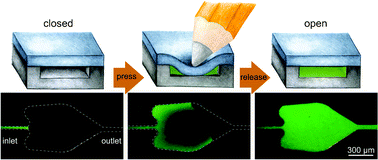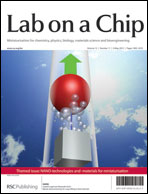Capillary-driven microfluidics are simple to use and provide the opportunity to perform fast biological assays with nanogram quantities of reagents and microliters of sample. Here we describe capillary soft valves (CSVs) as a simple-to-implement and -actuate approach for stopping liquids in capillary-driven microfluidics. CSVs are inserted between wettable microstructures and work to block liquids owing to a capillary pressure barrier of a few kPa. This barrier is suppressed by pressing down the soft cover of the CSV using, for example, the tip of a pen. CSVs comprise a hard layer (in silicon or polymer) with wettable microstructures and a soft cover made of poly(dimethylsiloxane) (PDMS) here. CSVs have a footprint as small as 0.6 mm2. We illustrate how these valves work in the context of detecting DNA analytes. Specifically, a dsDNA target (997 bp PCR product, non-purified) was detected at concentrations of 20 and 200 nM in a sample volume of 0.7 μL and within 10 min. The assay includes melting of the dsDNA at 95 °C, annealing of a 30-base biotinylated probe at 50 °C, and intercalation of a fluorescent dye into the re-hybridized dsDNA at 25 °C. Actuation of the CSV allows the DNA target–probe–dye complexes to flow over 100 μm wide, streptavidin receptor lines. This work suggests that CSVs can fulfil the requirements set by complex assays, in which elevated temperatures and reaction with probes, dyes and capture species are needed. CSVs therefore greatly complement capillary-driven microfluidics without adding significant design, fabrication and actuation issues.

You have access to this article
 Please wait while we load your content...
Something went wrong. Try again?
Please wait while we load your content...
Something went wrong. Try again?


 Please wait while we load your content...
Please wait while we load your content...